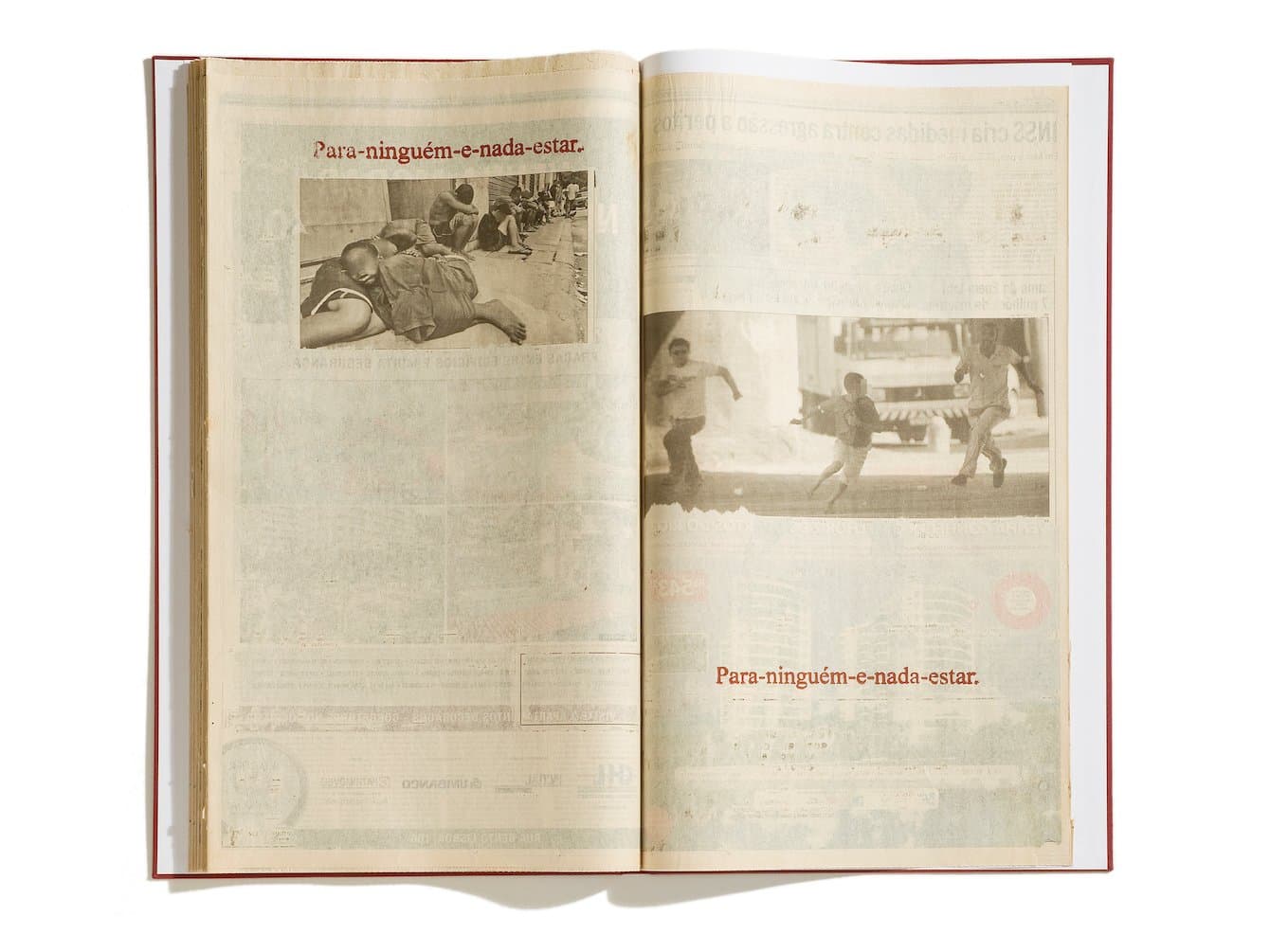
First, I want to alert the reader: this text about Leila is affected by a master-and-apprentice relationship. Everything of most value that I know about art I learned from books and classes, but Leila is the person who calibrated my sensibility around such topics and discussions. If I make a point of highlighting this information for the one who reads, it is not out of a pure impulse to embellish her, but because it describes an important mark of time that surpasses any material data in her work. Institutions, like exhibitions and research, are, above all, personal relationships, and I do not renounce this.
Leila is an aficionado of the world’s vestiges. A collector of “nows,” the only human time we can inhabit and that, in our nostalgic impulses, we revive for a few moments. In her practice, the artist investigates a series of elements that once denoted such an instant of experience that is so difficult to grasp—newspapers and prints of all kinds, but also news hyperlinks, stamps, and drifting images. In a process that engages with poetry and excavation (which are perhaps the same thing at their core), Danziger operates through methods of subtraction and addition that lend currency to what has been erased in an active desire to fight against forgetting. Here, we present the work Public Diaries (2010), conceived from the poem Tübingen, Januar (1965) by the Romanian poet Paul Celan, to address her gesture of erasing news reports, bought day by day, and subtracting information through adhesive tapes that, in the installation, occupy the table and spill into the house’s surroundings. In the background, a video alternates scenes of aimless newspapers flying over the city with recordings of her own interference with them. Stuttering, the repetition of the expression “Pallaksch Pallaksch” serves as a sonic suggestion for the strips that interfere with the printed matter.
Initially, the artist’s obsessive gesture may, at first, denote a nonconformity with the flagrant escape of what we call the present. However, upon observing To-stand-for-no-one-and-nothing (2006-2010), the practice seems to suggest another desire. It is obtained by removing texts that encapsulate the images of daily news and advertisements and incising the title-phrase in red stamp ink. Like Celan’s neologism, it casts these pages into the abyss of a non-place, both spatial and temporal, and, above all, impersonal. Art operates in paradoxical ways, we know: the result of subtraction is not zero, but poetry. Bent over the newspapers, Leila touches a linear, datable, and continuous time, burying one of the materials that make it visible and modifying the language of information to transform it into the image of the sphinx.
In the Green Room, the artist positions six works from the Bailinhos (2022) series. These are photographic prints from the collection of the Jewish Museum of São Paulo on mirrors. Leila once again fragments images, superimposing the visitor’s reflection with that of the little girl who, in costume, is preparing to celebrate Carnival. Jewish immigration acclimates to the popular Brazilian revelry, weaving a gaze towards this historical movement mixed with the candor of the theme and the violence of erasure. Like peeling skin, the reflection engages the memory of two times—in the case of Leila, who is also Jewish, this also establishes an ancestral relationship. Perhaps Eva’s ghost sees herself reflected in these objects, perhaps casting glances at the child and wishing to enjoy the delights of the festival of the flesh. In the crossing of temporalities, simplistically read as past and present, a third time challenges the understanding of this approximation—that of a spiraling time, which comes and goes, expands and compresses. It releases both from their places of belonging and frees them to dance, together. Just like the newspaper of Pallaksch Pallaksch, which dances with the wind, adrift in the streets.
